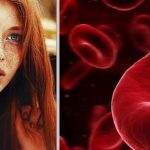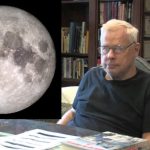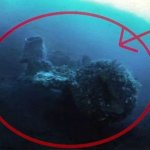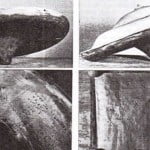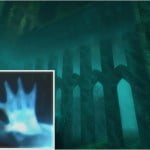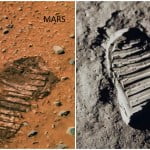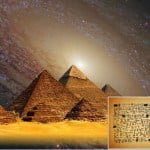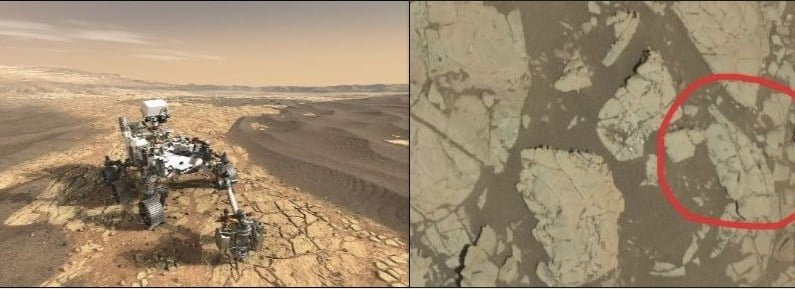
Bunch of pictures taken by the Mars Hand Lens Imager of the Curiosity Rover on Mars is giving enough material for the researcher Barry DiGregorio to theorize the robot actually found trace fossils on Mars.
Barry DiGregorio is a research associate for the Buckingham Centre for Astrobiology in the UK. He is also the author of the nonfiction books “Mars: The Living Planet” and “The Microbes of Mars.”
“They look remarkably similar to Ordovician trace fossils I have studied and photographed here on Earth. If not trace fossils, what other geological explanations will NASA come up with,” DiGregorio said for the Inside Outer Space.
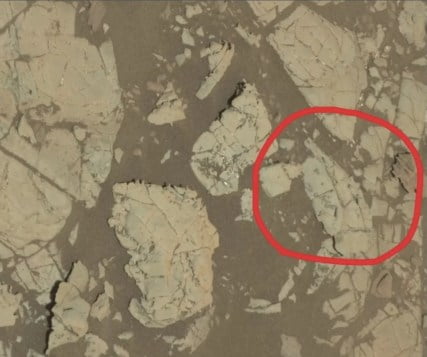
This question was addressed to the Curiosity Rover project expert, Ashwin Vasavada. He is a representative of NASA’s Jet Propulsion Laboratory in Pasadena, California.
Vasavada said that the noticeable traits are very tiny, apparently a millimeter or two in width, with the longest of the traits extending about 5 millimeters.
The features were initially detected in black and white representation. In the long run, they turned out to be so fascinating they got the team to send the Curiosity Rover back to make an additional analysis.
The further examination involved MAHLI – a focusable color camera attached to the rover’s arm.
“These were unique enough, given the fact that we didn’t know they were there … [that] we thought we should go back,” said Vasavada.
One of the crew members, Christopher Edwards, a planetary geologist at Northern Arizona University in Flagstaff, also encouraged the plan to turn Curiosity Rover back to investigate the weird features.
“This site was so interesting that we backtracked to get to where the rover was parked for this plan. In the workspace in front of the rover, we have some very peculiar targets that warranted some additional interrogation,” Edwards wrote in a mission update report.
Geological or biological process?
Vasavada said that they still haven’t dismissed a possible explanation regarding trace fossils. However, he also mentioned they don’t want to jump to conclusions so fast.
He also said that taking a closer look provides them with more details. For instance, the features were angular in many dimensions.
This suggests they could be somehow connected with crystals in the rock, maybe ‘crystal molds’ present on Earth. Vasavada then added that this is just another possibility.
“If we see more of them, then we begin to say that this is an important process that’s going on at Vera Rubin Ridge,” he said.
Curiosity Rover experts have argued a lot of the recently found peculiarities. Namely, their aim is to resolve what is their meaning and origin.
“That’s pretty challenging on Earth to distinguish those two things without being able to put these things into a lab to look for the presence of organics. We have a very limited capability overall to understand whether something is biological or not,” said Vasavada.
On the other hand, together with the MAHLI imagery, Curiosity’s Chemistry and Camera (ChemCam) and its Alpha Particle X-Ray Spectrometer are also probing the features and their nature.
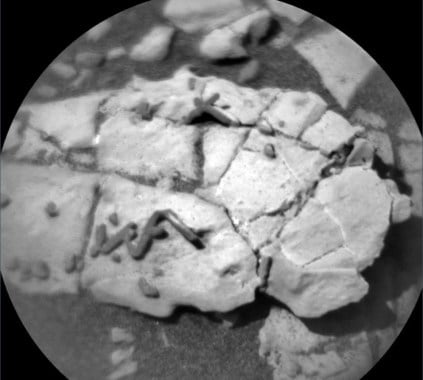
Possible alteration of the site by living organisms?
“The Curiosity images really pique our curiosity,” said Pascal Lee, a planetary scientist at the Mars Institute and SETI (Search for Extraterrestrial Intelligence) Institute in Mountain View, California.
“It’s hard to tell what the wiggly sticks are and a strictly mineral origin is, of course, the most plausible,” he added.
However, the scientist said that his first thought falls into the process of bioturbation. Bioturbation is the modification and disruption of a place by living organisms.
Could we connect this process to the Red Planet?
“Well, bioturbation at the scale of the features seen in the Curiosity imagery would imply macroscopic multicellular organisms at work, so something that would have evolved far beyond unicellular life.
To claim that we’re seeing bioturbation on Mars — which I did not say — would be an extraordinary claim,” said Lee.
The outcome of the Curiosity considerations needs much more evidence to make any conclusions, according to Lee.
He, however, agreed the imagery is quite intriguing and worthy of further analysis.
ДЕЙСТВУЮЩЕЕ ЗЕРКАЛО KRAB2.CC. ДЕЙСТВУЮЩЕЕ ЗЕРКАЛО KRAB3.CC

